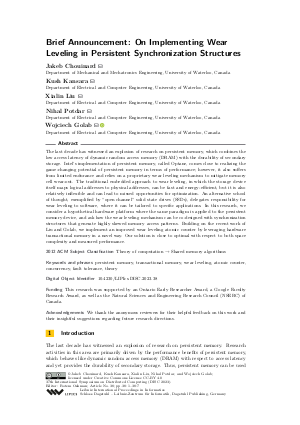LIPIcs.DISC.2023.38.pdf
- Filesize: 0.66 MB
- 7 pages

 Creative Commons Attribution 4.0 International license
Creative Commons Attribution 4.0 International license






Feedback for Dagstuhl Publishing